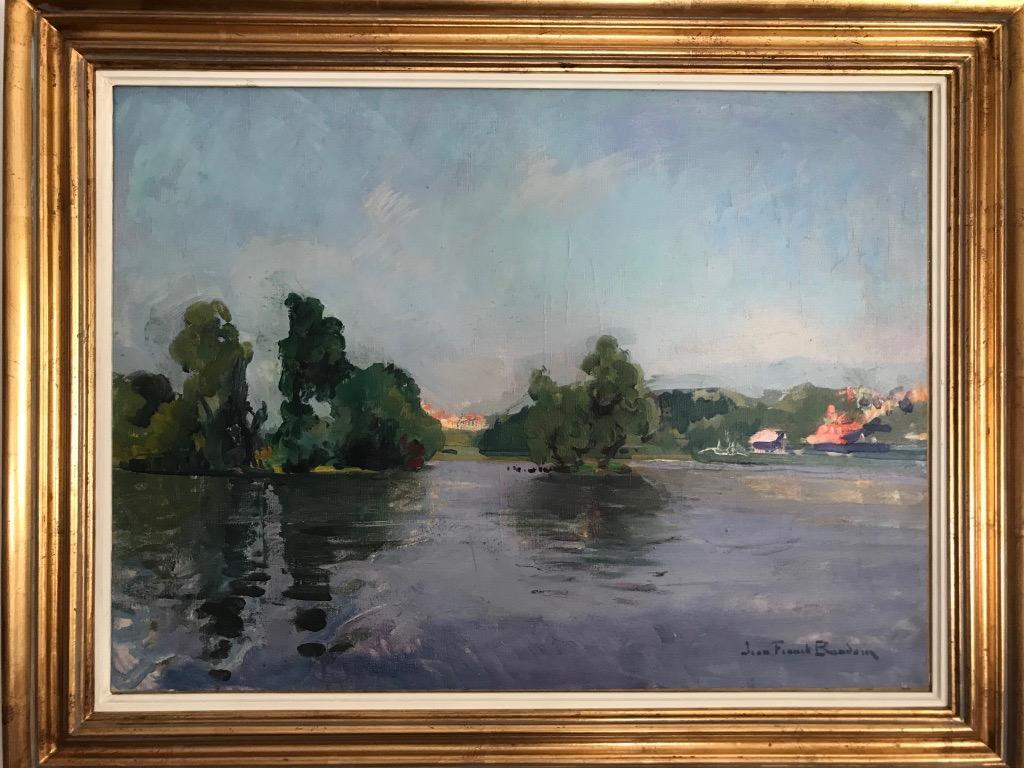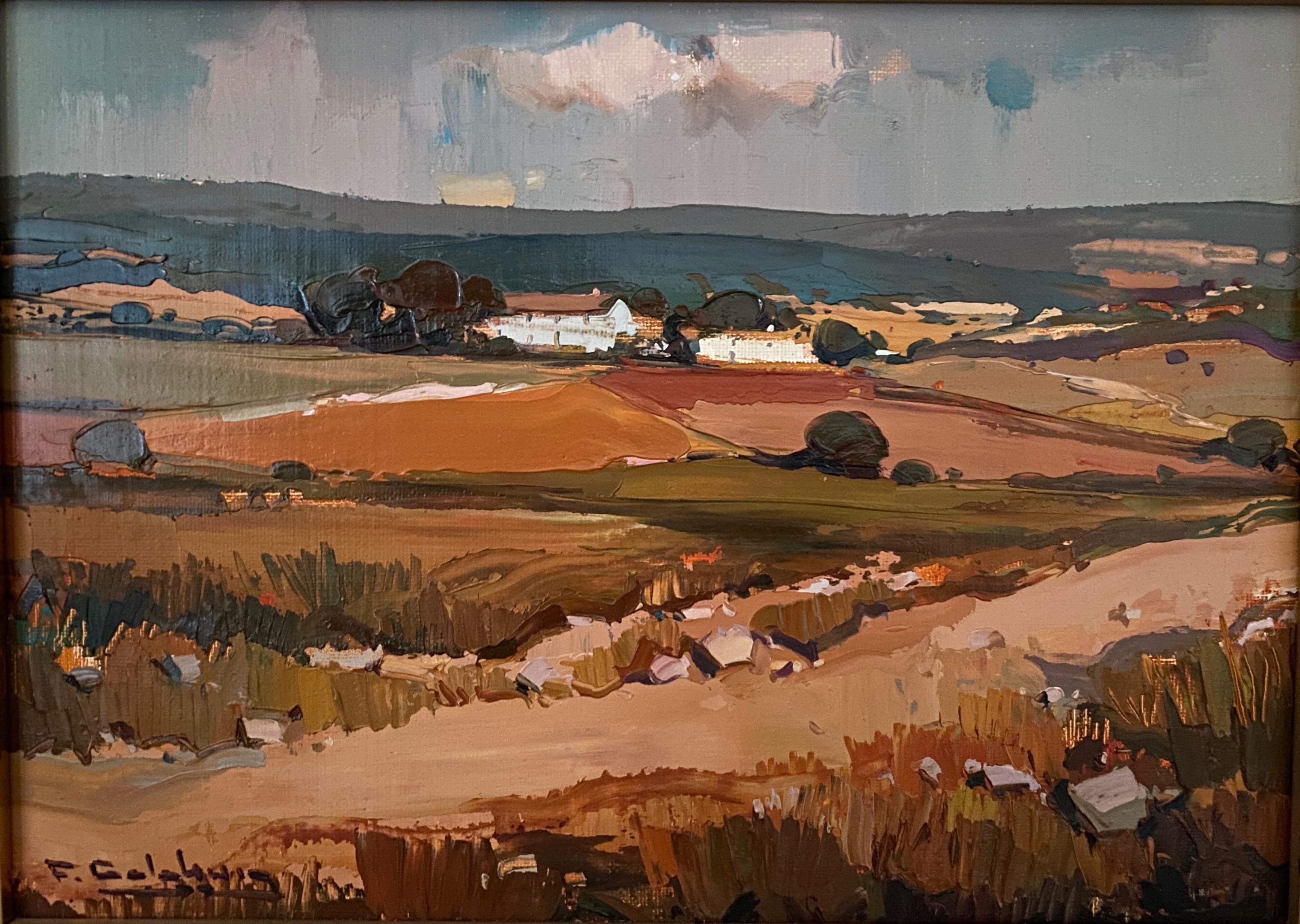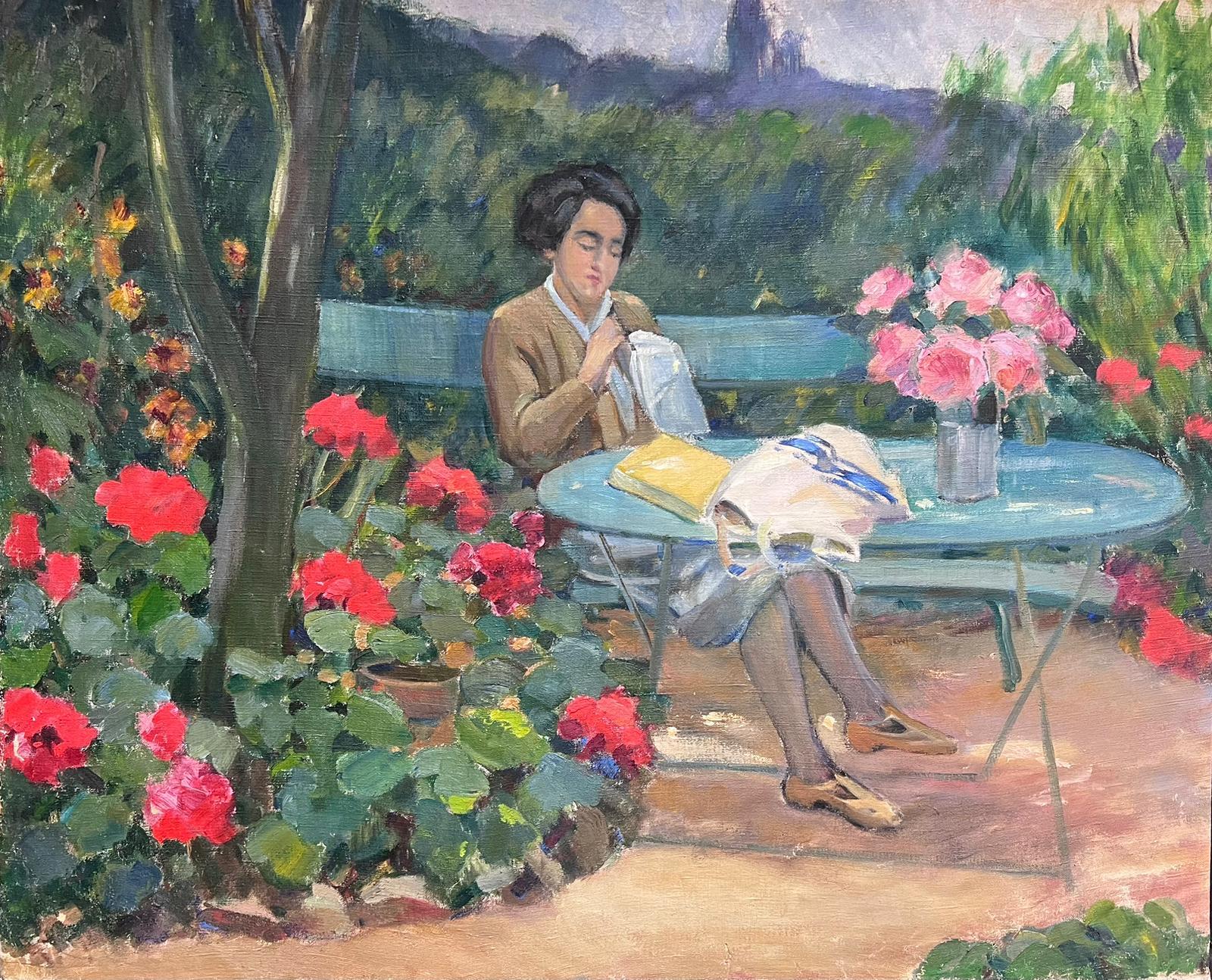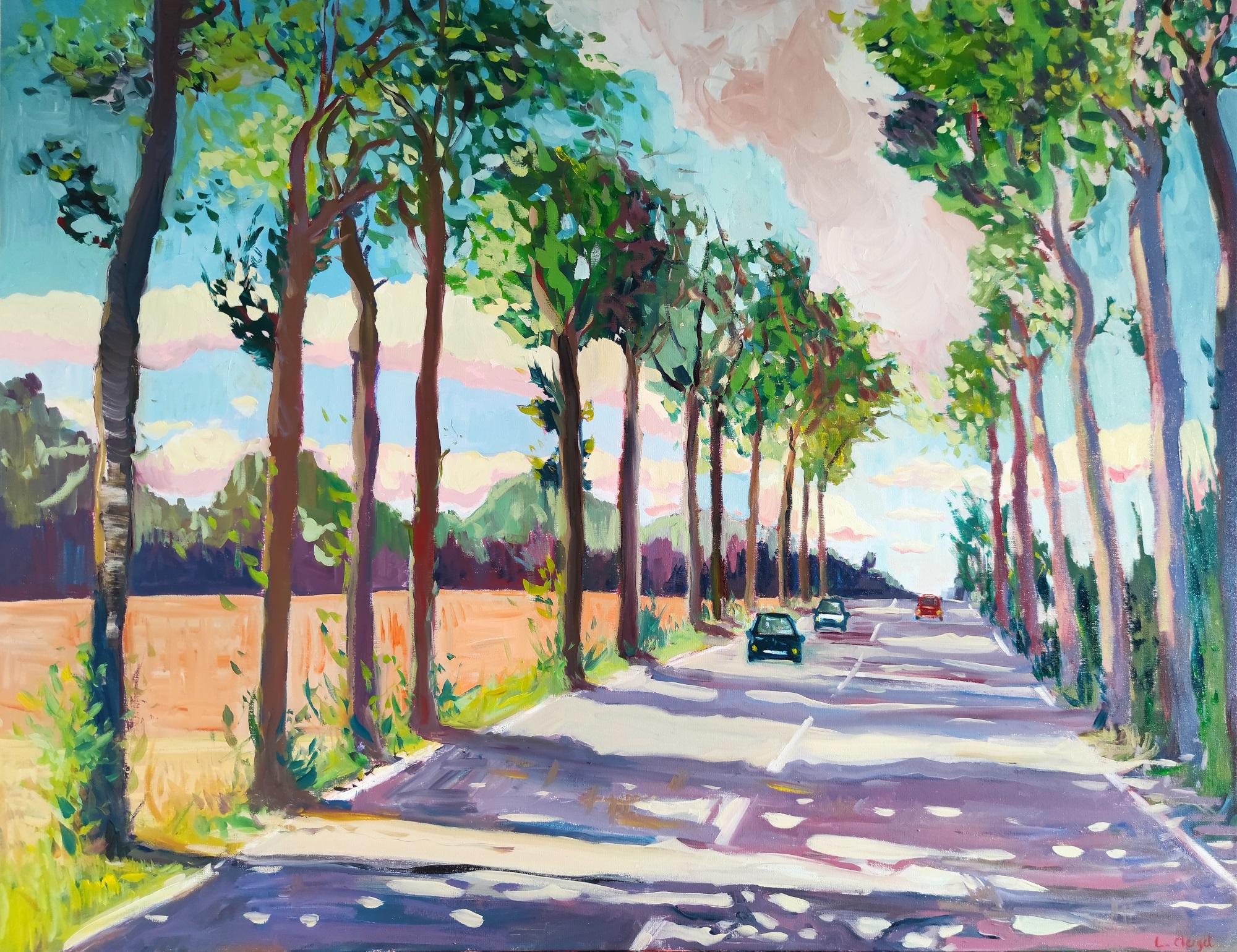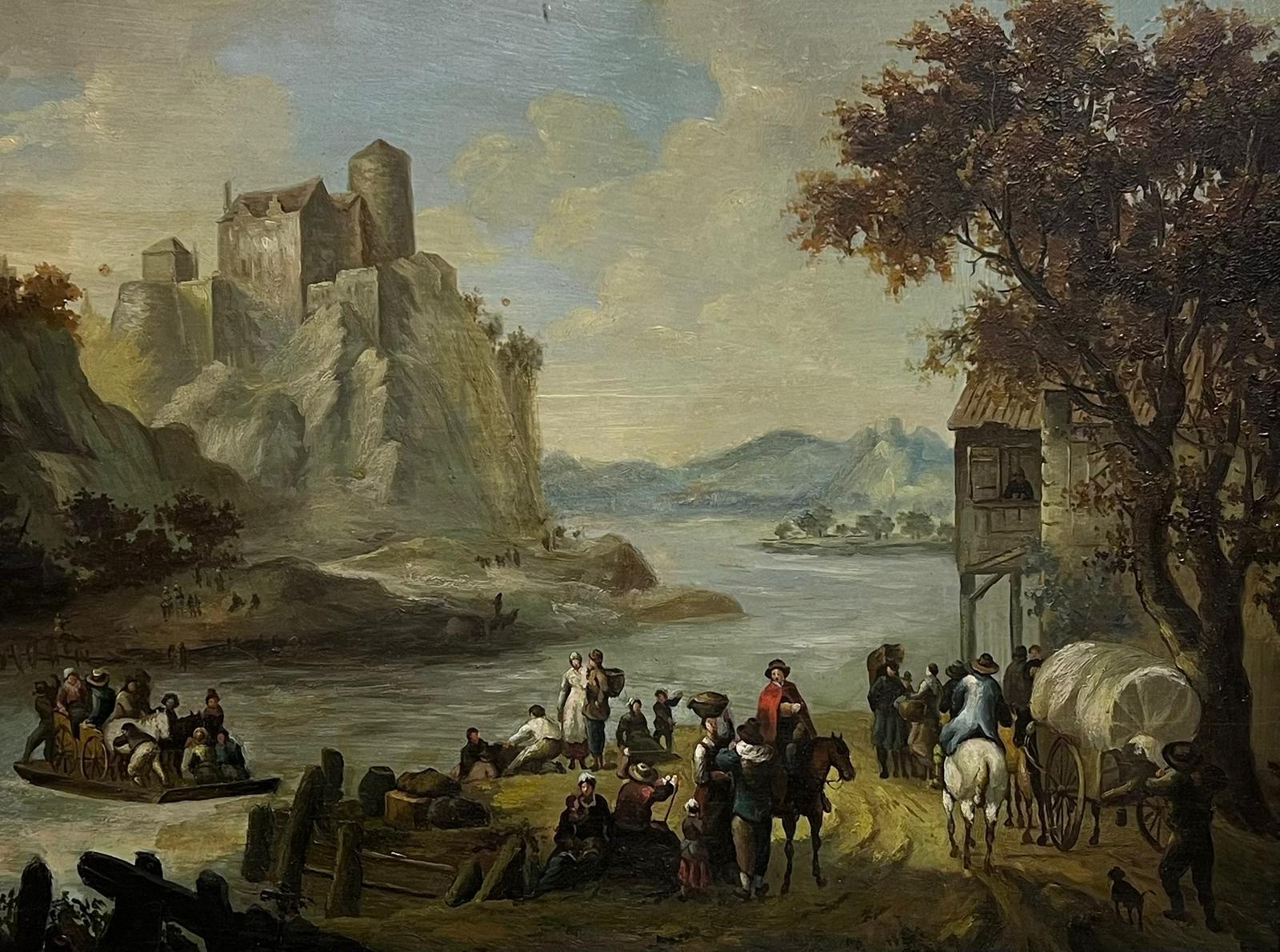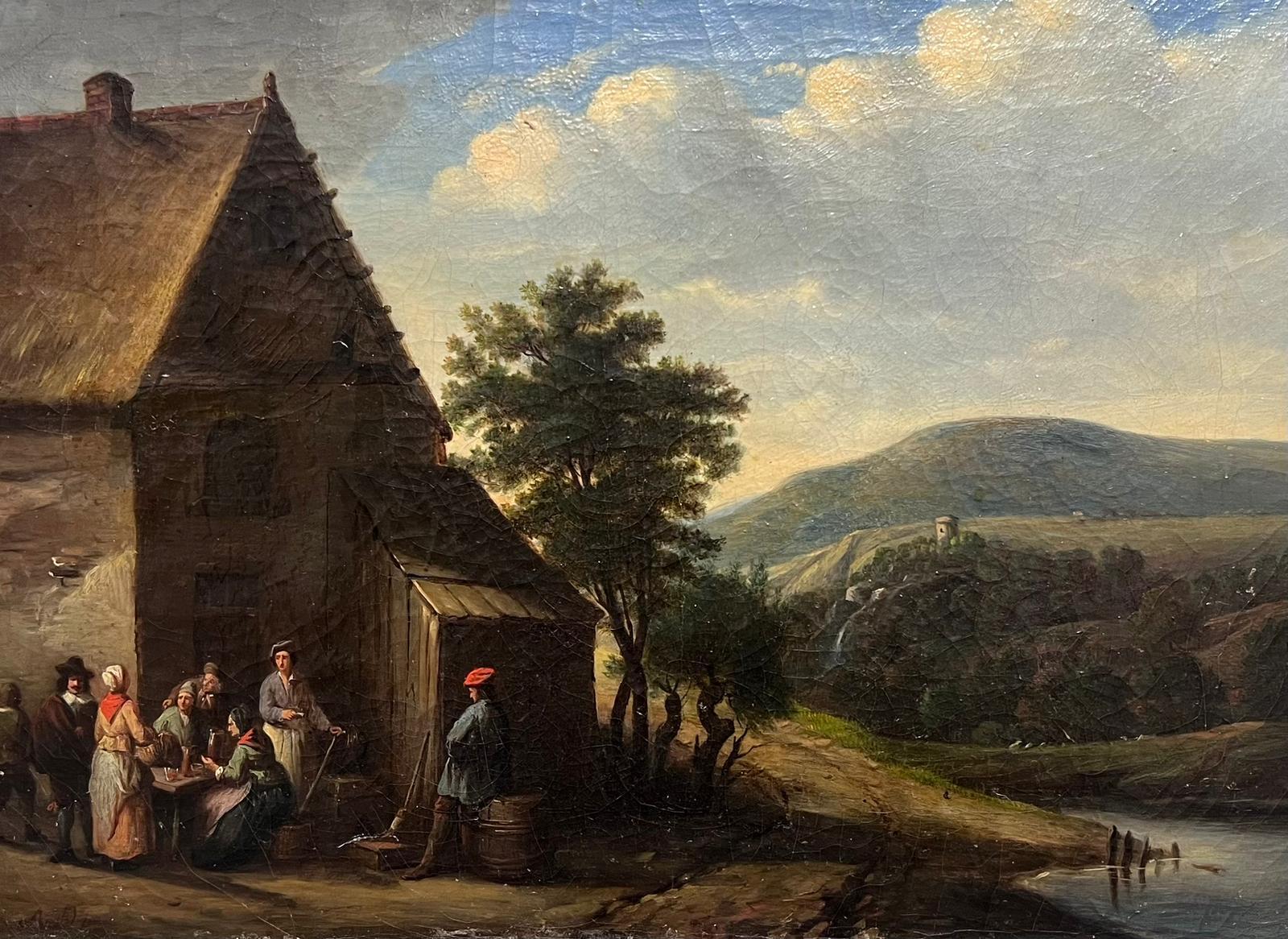Items Similar to Fine 18th Century Italian Old Master Oil Painting Berghers with Animals Sunset
Want more images or videos?
Request additional images or videos from the seller
1 of 10
Italian 18th CenturyFine 18th Century Italian Old Master Oil Painting Berghers with Animals Sunset
About the Item
The Close of Day
Italian School, early 18th century
oil on canvas, unframed
canvas: 17 x 22.5 inches
provenance: private collection, France
condition: very good and sound condition
- Creator:Italian 18th Century
- Dimensions:Height: 17 in (43.18 cm)Width: 22.5 in (57.15 cm)
- Medium:
- Movement & Style:
- Period:
- Condition:
- Gallery Location:Cirencester, GB
- Reference Number:1stDibs: LU509312936312

About the Seller
5.0
Platinum Seller
These expertly vetted sellers are 1stDibs' most experienced sellers and are rated highest by our customers.
Established in 1989
1stDibs seller since 2016
3,469 sales on 1stDibs
Typical response time: 2 hours
- ShippingRetrieving quote...Ships From: Cirencester, United Kingdom
- Return PolicyA return for this item may be initiated within 3 days of delivery.
Auctions on 1stDibs
Our timed auctions are an opportunity to bid on extraordinary design. We do not charge a Buyer's Premium and shipping is facilitated by 1stDibs and/or the seller. Plus, all auction purchases are covered by our comprehensive Buyer Protection. Learn More
More From This SellerView All
- 1800's French Naval Battle Scene Night Time Engagement Large Oil on CanvasLocated in Cirencester, GloucestershireThe Naval Engagement French School, early 1800's period oil on canvas, unframed painting: 28 x 36 inches provenance: private collection condition: very good and sound condition, with...Category
Early 19th Century Old Masters Landscape Paintings
MaterialsCanvas, Oil
- Early 1800's English Oil Painting Figure in Rural Woodland Landscape, originalBy circle of John ConstableLocated in Cirencester, GloucestershireArtist: English School, early 1800's, circle of John Constable (British 1776-1837) Title: The Woodland Path Medium: oil on canvas, framed Size: 12 x 22 inches Picture: 9 x 18 inches Provence: from a private collection in East Anglia...Category
Early 19th Century Old Masters Landscape Paintings
MaterialsOil, Canvas
- Large 18th Century British Old Master Oil Painting Figures at Dusk in WoodlandLocated in Cirencester, GloucestershireThe Close of Day English artist, second half 18th century circle of Thomas Gainsborough (British 1727-1788) oil on canvas, unframed canvas: 24.5 x 29 inches provenance: private colle...Category
18th Century Old Masters Landscape Paintings
MaterialsOil, Canvas
- HUGE 17thC ITALIAN OLD MASTER OIL PAINTING - KING & COURT FIGURES ROMAN BUILDINGLocated in Cirencester, GloucestershireArtist/ School: Italian School, 17th century. Title: A King and Queen before court figures, amidst a classical landscape with Roman columns. Medium: oil painting on canvas, framed ...Category
17th Century Old Masters Figurative Paintings
MaterialsOil, Canvas
- Fine 1700's Italian Old Master Oil Painting Figures by Shipping Harbour PortLocated in Cirencester, GloucestershireThe Trading Port Italian artist, circa 1720's period circle of Michele Marieschi (Italian 1696-1744) oil on canvas, unframed canvas: 21 x 30 inches provenance: private collection, UK...Category
Early 18th Century Old Masters Landscape Paintings
MaterialsCanvas, Oil
- Massive 1600's Dutch Golden Age Old Master Oil Painting Figures in Chateau ParkBy David VinckboonsLocated in Cirencester, GloucestershireFigures in a Chateau Parkland Court Setting Dutch Golden Age, early 1600's period circle of David Vinckboons (Dutch 1576-1632) oil painting on canvas, unframed canvas measures: 55 x ...Category
Early 17th Century Old Masters Figurative Paintings
MaterialsCanvas, Oil
You May Also Like
- Vedustist painter (Veneto school) - 19th century landscape painting - PadovaLocated in Varmo, ITVenetian painter (19th century) - Padua, Porta Liviana. 37.5 x 48.5 cm without frame, 50.5 x 60 cm with frame. Oil on canvas, in a carved wooden frame. Condition report: Good stat...Category
Early 19th Century Old Masters Landscape Paintings
MaterialsCanvas, Oil
- Two countrywomen with a donkey - Melancholy in an atmosphere of colour -Located in Berlin, DEPierre Louis De La Rive (1753 Geneva - 1817 Geneva). Two countrywomen with a donkey. Oil on canvas, mounted, 27 x 20 cm (visible size), 37 x 31 (frame), monogrammed "P.R." at lower right. About the artwork De La Rive has taken the typical scenes of Dutch landscape genre paintings...Category
1790s Old Masters Figurative Paintings
MaterialsCanvas, Oil
- A 17th c. Italian school, Capriccio with the Colosseum, circle of V. CodazziLocated in PARIS, FRA capriccio with the Colosseum in Roma 17th century Italian school Circle of Viviano Codazzi (1604-1670) Oil on canvas Dimensions: h. 35.43 in, w. 51.18 in Modern 17th century style ...Category
17th Century Old Masters Landscape Paintings
MaterialsCanvas, Oil
- Landscape Near Felday, SurreyBy Abraham Hulk the YoungerLocated in Hillsborough, NCDutch/English artist Abraham Hulk the Younger (1851-1922) is most known for landscapes of the British countryside. This work is one of a pair (the second work is also available by s...Category
Late 19th Century Old Masters Landscape Paintings
MaterialsCanvas, Oil
- 18th Century Neoclassical Oil Painting of the Trojan War: Briseis & AchillesBy James ThornhillLocated in London, GBJames Thornhill (1674-1735) Oil on canvas 12 x 14 inches; 16 ½ x 18 ½ in. Inc. frame The subject matter and inclusion of herms on both sides shows the influence of Louis...Category
Early 18th Century Old Masters Figurative Paintings
MaterialsOil, Canvas
- Peasants in a Cornfield (Boer in het veld) by David Teniers the YoungerBy David Teniers the YoungerLocated in Stockholm, SERemembering the magic of everyday life moments in the art of David Teniers: The art of David Teniers the Younger (1610–1690) coincided with the heyday of the Flemish Baroque and captured a great variety of motifs of his time. In this painting of a seemingly simple peasant scene lies keys to understanding both the imaginative mind of Teniers as well as why this time period produced some of the most iconic works in all of art history. As indicated by the name, Teniers was more or less born into his profession. As the son of David Teniers the elder, himself a painter who studied under Rubens, the younger David received training in art from a very young age and had no less than three brothers who also became painters. Because of his father’s frequent financial failures that even at times saw him imprisoned, David the younger helped to rescue the family from ruin through painting copies of old masters. Essentially, the young Teniers was confronted with painting as both a passion and creative expression as well as a necessity during difficult times, an experience that would shape much of his capacity and sensitivity in his coming life. Despite the hardships, the talent and determination of Teniers was recognized and quickly expanded his possibilities. He had already spent time in France and possibly also England when he was hired by his father’s former teacher Rubens to help with a prestigious commission with mythological paintings, now considered lost, for Philip IV the king Spain. In 1644–54 Teniers was appointed dean of the Antwerp Guild of Saint Luke, manifesting his esteemed position within the artistic community. A few years afterwards he took an important step when relocating to Brussels, where Teniers yet again found new career opportunities that would prove to be very successful. As the keeper of the collections of Archduke Leopold Wilhelm, a role similar to what we now refer to as an art advisor, Teniers purchased hundreds of important artworks that manifested the prominent status of the Archduke’s collection while at the same time providing an unusual access to inspiration and knowledge for Teniers himself. Since he kept on painting during the same time, his creative scope must have seemed almost bewildering in the great variety of images and stories that he surrounded himself with. Regardless of how glamorous and culturally stimulating the career of Teniers was, he was as open to the charm and existential importance of everyday life as he was to works of great masters and luxurious collectibles. In his impressive repertoire of genres with everything from exquisite royal portraits, interiors, landscapes and history paintings he always added something new and inventive, highlighting the possibilities of art and importance of an experimental and intuitive mind. It is difficult to single out one aspect or genre to summarize his legacy, since it lies much more in the broad virtuosity across many motifs, although he is particularly remembered for farm scenes and meticulously depicted interiors where other paintings and artworks are captured with an astonishing precision. However, the fact that he is still today one of the most known and celebrated names of the Dutch Golden Age is a proof to the magic of his work, which continues to spark dialogue and wonder in the contemporary viewer of his works. The farm boy in the field in this painting, which likely dates to the mature part of his career, is a wonderful entry into the mind of Teniers. In the tightly cropped motif, we see him standing right in the middle of the busy harvest when men, women and everyone capable were sent out in the field to collect the crop that formed the very core of their diet and survival. In the background we see a fresh blue sky interspersed with skillfully painted clouds, some trees reaching their autumnal colours and in the far distance the glimpse of a small church and village. The presence of a church in a landscape, so typical of Dutch art, served both a symbolic and visual function as a representation of faith while at the same time defining scale and distance. In the field, the work is in full action with the farmers spread out in various positions, all in the midst of hard and sweaty labour. While they are portrayed as having nothing else than the work on their mind, our farm boy seems to have his attention directed elsewhere. Standing there with his white, half open shirt, flowy curls and strong, sturdy body; his gaze is directed away, out of the picture and the scythes in his hands. He looks almost smirking, expressed with tremendous subtlety in the slight smile of his lips and big eyes, being just in the middle of losing focus on the work. What is it that steals his attention? What has he seen, or realized, or felt – to break him free of the arduous task of harvesting, if but for a moment? Here starts the wondering and the questions that are the hallmark of a great piece of art. Instead of explicitly locking in the motif in overly clear symbolism Teniers has chosen an open ended, subtle yet striking moment for us to consider. While it of course can be related to numerous other farm scene depictions of this time, and clever usages of gazes and real-life scenes to underscore various moral or symbolic meanings, the painting can be much more of a contemplation than an explanation or illustration. The ordinary nature and understated yet emotionally textured composition of the motif gives greater space for our own reactions and thoughts. Has he seen a pretty farm girl just passing by? Is he fed up with the farm life, joyously dreaming away for a minute, imagining another future? Or is he simply in need of distraction, looking away and ready for anything that can steal his attention? One quality that never seem to have escaped Teniers was that of curiosity. During all of his career he constantly investigated, expanded and experimented with not only the style and technique of painting, but with the vision of art itself. Being credited with more or less introducing farm motifs for a broader audience not only tells us of his ability to understand the demand for different motifs, but the sensitivity to transform seemingly ordinary parts of life into deep aesthetic experiences, far beyond their expected reach. The farm boy in this painting is, of course, exactly that. But with the help of one smirk the entire picture is charged with a different energy, awakening many contrasts and relationships between the calm landscape, the hard work and his own breach of effectivity, holding sharp scythes while thinking or seeing something else. It is no wonder Teniers chose to work with farm scenes as a way of investigating these intricate and delicate plays on expectations and surprises, clarity and ambivalence. It invites us to an appreciation of human everyday life that connects us with the people of 17th century...Category
Late 17th Century Old Masters Landscape Paintings
MaterialsOil, Canvas
